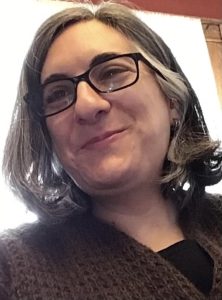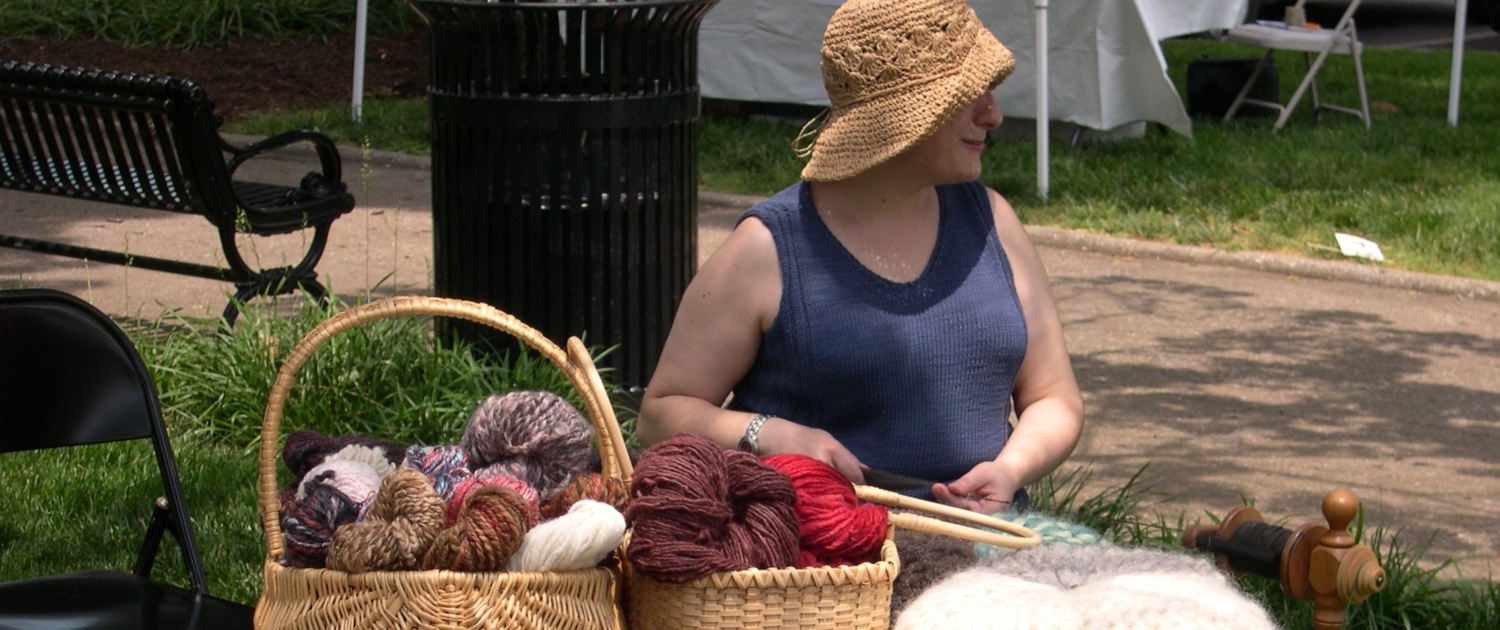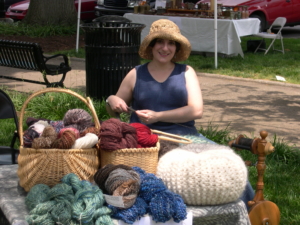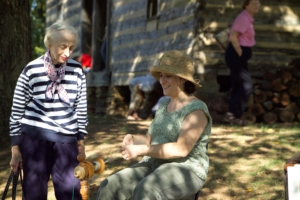Just because you’ve learned to spin doesn’t mean every group or experience with “spinning” in the title is a perfect fit. (Hint, the exercise classes are not the same thing!)
When I started to spin as a tween in the 1980s, I remember how isolated I felt. The few gatherings and guild events I attended were full of adults. The living history site where I first learned about spinning had plenty of other kid volunteers but didn’t include anyone as passionate about handspinning as I was. I expected to be alone forever as a spinner! It wasn’t until I was an adult that I found some “homes” as a spinner. I also learned it was okay to leave the ones that didn’t fit. These communities come and go over time, and they certainly change over the lifetime of a spinner. Here’s a short tour of some of the options I’ve experienced, from most formal to least.
Guild
Usually, in-person guilds are organized groups that meet regularly. They often have educational programming or workshops, by-laws, group events, and sometimes loaning libraries or equipment for rent. They’re diverse, but you can expect a guild that has been around for many years to have a structure, ritual, and rules. You can learn a lot from a guild setting, but it’s not everyone’s best fit.
There are also guilds that are completely online or in hybrid formats. These offer more options than the more traditional guild structure, but fees, structure, or more formal constraints also may still be a part of the interaction.
Group
Sometimes spinning groups arise. These can feel casual, maybe meeting in libraries, community centres, people’s living rooms, or yards. These may have some programming or group events or may be just social gatherings. These groups sometimes include breaks for snacks or time to visit with fiber-producing animals nearby. Some groups have swaps or selling days where members trade stash or purchase from fiber producers directly.
While these groups may lack some of the structure of a guild, this can bring both positives and negatives. When a group’s organizers move or stop attending, sometimes the group itself no longer continues. Sometimes the sole organizer may tire of cleaning up the living room or hosting, feeling burnout. In the absence of others willing to take on these responsibilities, the group can fall apart.
Event
Fiber festivals, frolics, fairs . . . these are all excellent ways for spinners to meet, compete, and shop! Some spinners only ever talk to others at these events. Use a book like Fiber Gathering or read about festivals online to find one near you. Be prepared to shop – some events focus exclusively on buying and selling. Others include spinning competitions, demonstrations, classes, food, and sheep 4-H shows.
Again, in the past these were only in-person events, but now people may be just as likely to meet online during a virtual event in a chatroom. Don’t discount opportunities like a mystery knit-along, YAL (yarn-along), or casual positive interactions on other online forums. Sometimes longtime friends or learning relationships begin this way.
Gathering with friends
Sometimes the best spinning communities are the ones you make yourself. Spinners can find they have a lot in common. Maybe they’re also knitters, weavers, canners, bakers, or gardeners. Whatever your interests, there are friends out there waiting to be made! I’ve met some of my closest friends through spinning. There is nothing like getting together with one or two friends on a porch to spin or share an outdoor dye pot on a warm day or roping a friend into a drive to a farm to help skirt fleece or shop for the perfect alpaca blanket. If you’re not up for crowds but still want to gather, one good spinner friend may be all you need!
It’s important to realize that just because someone else is a spinner it doesn’t mean we will instantly be best buddies. In an increasingly combative social climate, polarizing viewpoints can keep us from bonding over something like spinning. In the past, everyone had to spin to make clothing, and of course, we wouldn’t assume that just because someone else cooks/brushes their teeth/works that we would have lots in common. We also all have different thresholds for gatherings and events in the pandemic age. Yet we can get a lot of value out of exploring, learning, and growing our wider spinning communities. It’s well worth it to meet a new friend . . . or the farmer who raised the fleece you can’t resist.
 Joanne Seiff has written three fiber-related books: Three Ply, Fiber Gathering, and Knit Green. She writes, edits, spins, knits, and designs in Winnipeg. See her designs on Payhip, Ravelry, and Lovecrafts.com – her designs might sing in your handspun. Read joanneseiff.blogspot.com or @yrnspinner on Instagram to learn more!
Joanne Seiff has written three fiber-related books: Three Ply, Fiber Gathering, and Knit Green. She writes, edits, spins, knits, and designs in Winnipeg. See her designs on Payhip, Ravelry, and Lovecrafts.com – her designs might sing in your handspun. Read joanneseiff.blogspot.com or @yrnspinner on Instagram to learn more!






Leave a Reply
Want to join the discussion?Feel free to contribute!